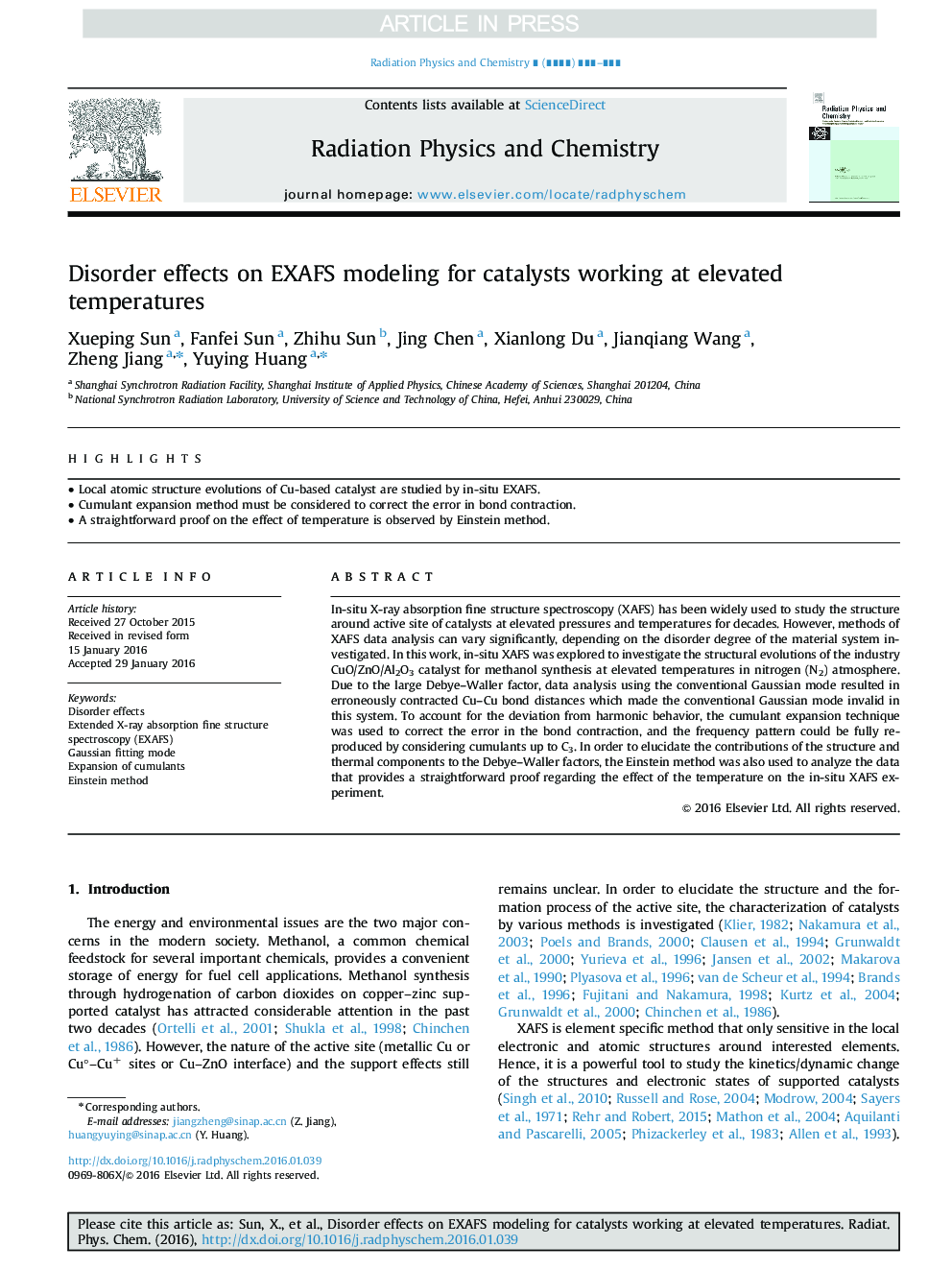| Article ID | Journal | Published Year | Pages | File Type |
|---|---|---|---|---|
| 5499253 | Radiation Physics and Chemistry | 2017 | 6 Pages |
Abstract
In-situ X-ray absorption fine structure spectroscopy (XAFS) has been widely used to study the structure around active site of catalysts at elevated pressures and temperatures for decades. However, methods of XAFS data analysis can vary significantly, depending on the disorder degree of the material system investigated. In this work, in-situ XAFS was explored to investigate the structural evolutions of the industry CuO/ZnO/Al2O3 catalyst for methanol synthesis at elevated temperatures in nitrogen (N2) atmosphere. Due to the large Debye-Waller factor, data analysis using the conventional Gaussian mode resulted in erroneously contracted Cu-Cu bond distances which made the conventional Gaussian mode invalid in this system. To account for the deviation from harmonic behavior, the cumulant expansion technique was used to correct the error in the bond contraction, and the frequency pattern could be fully reproduced by considering cumulants up to C3. In order to elucidate the contributions of the structure and thermal components to the Debye-Waller factors, the Einstein method was also used to analyze the data that provides a straightforward proof regarding the effect of the temperature on the in-situ XAFS experiment.
Related Topics
Physical Sciences and Engineering
Physics and Astronomy
Radiation
Authors
Xueping Sun, Fanfei Sun, Zhihu Sun, Jing Chen, Xianlong Du, Jianqiang Wang, Zheng Jiang, Yuying Huang,
